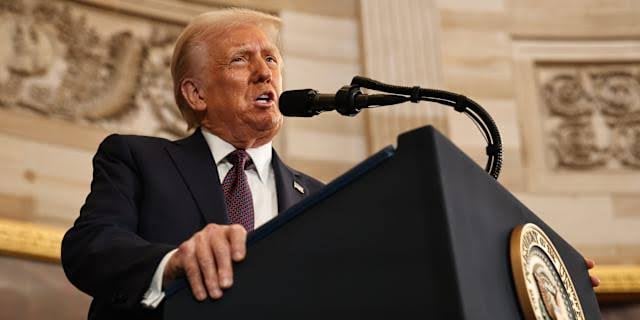Trump Targets BRICS-Aligned Nations With Tariffs

U.S. President Donald Trump has reignited global trade tensions by announcing a blanket 10% tariff on any country aligning itself with BRICS (traditionally Brazil, Russia, India, China, and South Africa) policies that he claims undermine American interests.
Last year, the list of BRICS members expanded beyond the original group to include Egypt, Ethiopia, Indonesia, Iran, Saudi Arabia and the United Arab Emirates.
With the initial deadline for a global trade deal having lapsed on July 9, Trump now plans to enforce the new tariffs starting August 1. So far, only the UK, Vietnam, and China, through a partial agreement, have secured trade arrangements with the U.S.
The president confirmed he would be sending notices to at least 10 countries, outlining specific tariff rates unless they return to the negotiating table.
At present, a 10% levy already applies to goods entering the U.S. from most trading partners. The European Union is negotiating to retain this provisional rate while seeking reductions on a 25% car tariff and a 50% duty on steel and aluminum. Japan, too, has been warned it could face tariffs as high as 35% if no deal is reached by mid-July.
What Does This Mean for Me?
The latest move follows BRICS nations openly criticizing U.S. tariff policies and advocating for reforms to the IMF and global currency systems. With BRICS now including 11 members representing over half the world’s population, the threat of fragmentation in global trade appears more real than rhetorical.
As Trump pivots trade from diplomacy to deterrence, markets are watching closely for retaliatory moves that could further roil supply chains and investor confidence.
More News
.webp)
Japan’s Rate Shift Is Rippling Through Global Bond Markets

China’s Growth Engine Stalls as Consumers and Investors Pull Back

Egypt’s Recovery Gains Traction as Household Pressure Lingers

OECD Warns AI and Tariffs Will Test the Global Economy

Zero Tariffs, Higher Drug Bills as US and UK Reset Pharma Trade

Catastrophe Bonds Go Global as Climate Risk Meets Yield Hunting
.webp)
Canada Shields Steel and Lumber Industries From Tariffs
